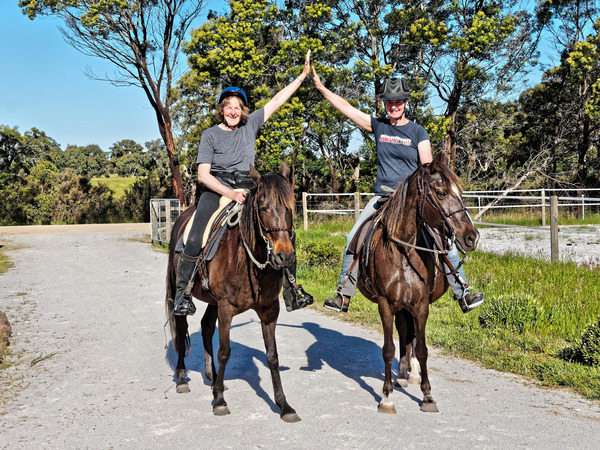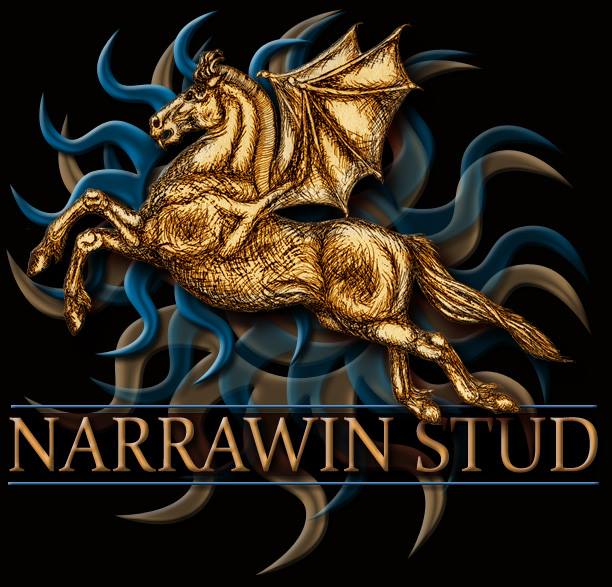Open letter
#breeding #Paso Creole #Icelandic

It has come to my attention that there may be some confusion in relation to my stud activities. To save everyone time and the dreary inconvenience of having to rely on hearsay (both the innocent and the other variety), here is the concise version – straight from the horse’s mouth. Instead of addressing some of the Chinese whispers, here is what I currently do, what the history is behind it, where I’m aiming at, and some of the stuff I believe in as a breeder.
Starting in 1995, I bred American Saddlebreds. After purchasing a beautiful colt that turned out to be unsuitable for breeding, I was lucky to find a naturally 5-gaited stallion who was my best mate until I lost him to cancer several years later. I bought foundation stock, most of which I started and trained myself. I imported a colt from USA and acquired other imported horses. I showed Saddlebreds led and ridden (including 5-Gaited) at local and national shows. I sold Saddlebreds to most Australian states and territories and overseas. While I still have two stallions, I am no longer an active breeder. I bred pure and partbred horses, which were registered as such with the Saddlebred registry active at the time. I served on the board of the Saddlebred Association in various capacities, such as registrar, for several years.
I started owning and breeding Peruvian Horses in 1995. I imported a mare with a foal in utero, acquired other imported stock and was instrumental in bringing further horses to Australia while managing another large stud. I showed Peruvian horses, helped promote the bred, started and trained them and enjoyed riding them for many years. While I still have a mare and a partbred gelding, I am no longer an active breeder. I bred both pure Peruvian and partbred horses. They were sold all over Australia and some to NZ. Purebreds are registered with PHAA, partbreds are registered as “Paso Creole” horses with UAHA. I still work with Peruvian Horses from time to time and love riding my older mare.
I currently breed Paso Fino Horses. I have been involved with this breed since 2001. I managed a stud for 5 years for the late Jorge de Moya, who imported the first Paso Fino Horses into Australia. When the stud was dispersed, I purchased most of the purebreds and some outstanding Paso Creoles. Subsequently, I imported several purebred Paso Fino horses from NZ. I have shown and promoted Paso Fino horses at various venues. I actively breed and train and compete with my Paso Fino Horses, particularly with my stallion Rev. I breed both pure and partbred horses. Paso Finos and Paso Creoles are registered with UAHA. Partbreds are registered as Paso Creole horses.
In 2002, I purchased an Andalusian stallion, with a view to crossing with some of my Paso mares, for more size and bone, and as I am interested in Spanish Horses. Subsequently, I bred a number of partbred Andalusian Horses, all registered with AHAA (some dual registered as Paso Creoles with UAHA). The stallion was also widely used at Jorge’s stud and leased out to another breeder in Victoria, and has excellent progeny. I still breed an occasional foal from this stallion due to his outstanding qualities, and I am a full member of AHAA, but I don’t call myself an Andalusian breeder.
I breed Icelandic horses. I have been involved with this breed since 2004, when I imported a colt from NZ (discounting any contacts I had in Germany in the mid 1980s). I spent time with the Vinbrux family in NZ and with the late Clyde Haldane. Sadly, the imported colt had a retained testicle and I decided not to pursue my goal of breeding from him, just to be 100% sure that this flaw would not creep into the pure Icelandic stock. However, as I greatly valued his temperament and conformation, I bred him to two exceptional other breed mares, and I was asked to bred a third mare for a bespoke foal. Subsequently he was gelded and sold as a riding horse. I maintained my involvement with the breed by starting and educating a number of Icelandic horses over the years, and through friends involved with the breed. In 2015, the stars aligned. Gneisti arrived in Australia and I was able to lease two Icelandic mares. Since then, I have been fortunate to breed three purebred foals. These are or will be registered with FEIF via IHAA. As Gneisti impressed me as a riding horse, I also bred him two selected quality Paso Fino mares. Such crossbred foals are destined to be riding horses, colts to be gelded, and they will be registered as Paso Creoles with UAHA. As an active rider and breeder of Icelandic Horses, I have promoted Icelandic Horses through participation at clinics, expos, and open competitions. I also support the breed by serving on the board of IHAA.
My goals are:
- Breed, raise and train pure Paso Fino Horses
- Breed, raise and train pure Icelandic Horses
- Breed, raise and train Paso Creole Horses
- Raise awareness of and promote each breed in its own right
- Raise awareness of Gaited Horses and promote their benefits to the public
- Educate riders and future trainers of Gaited Horses
- Teach interested people about the saddle gaits, showing similarities and differences between the horse breeds
I educate Gaited Horses of all breeds, and I teach riders how to ride them within the framework of classical equitation. I am an active rider and competitor, showcasing Icelandic Horses and Paso Horses. My passion for horses encompasses several horse breeds, and I value each in their own right. As a result I am not breed blind and I can see commonalities, training opportunities and many possibilities that may not be evident to anyone focussing on one breed only. I am a friend of open discussions about riding, eduction, breeding, history and horse breeds. I am often asked for advice on these topics, but will be the first to admit that I don’t have all the answers. I do however have 22 years as breeder, rider and trainer of Gaited Horses, and many more years as competitive rider across many disciplines. I have given freely of my time to help run clubs and breed registries, and I understand how associations work (or not), from both a member and board member perspective. As a breeder, I know the challenges in rare horse breeds in particular, and as a result, I love cooperative endeavours, people giving each other a hand and people learning from each other. My belief is that a rising tide lifts all boats.
Regardless of breed, my opinion is that a purebred horse must be purebred. It is not possible to “breed up” to a purebred, and a studbook must carefully maintain a purebred section. Crossbreeding must be done with a goal in mind and the horses used must be good examples of their respective breeds. I also believe that crossbreeding can successfully lead to the establishment of new breeds that suit specific purposes, but one must be clear about breeding goals and there has to be documentation. Successful examples of this are Aztecas (arising from Quarter Horses and Andalusians), Aegidienber Horses (a result of crossing Peruvian Horses and Icelandic Horses) and many of the modern Sport Horses. I believe that crossbreds or partbreds are not inherently less valuable than purebreds. Both have their place. Many a person found their way into buying purebreds via partbred ownership and many a rare breed has prospered as a result.
The backbone of any breed is a proper studbook, run by a capable and efficient registrar, who will maintain an accurate register of purebred horses, supported by DNA testing. The purity of the purebred lines must be maintained, as they are the genetic treasure chest for future generations, and any good horse registry will have that as a primary goal. Most registries also maintain a register of crossbred horses and actively support both pure and partbred classes at show. Some specific crosses even have their own names, examples are Warlander (Friesian x Andalusian), Georgian Grande (Saddlebred x draught breeds), National Showhorse (Arabian x Saddlebred) and Anglo (Arabian x TB). There are also a few registries that discourage crossbreeding. Regardless of which policy is preferred, crossbreeding will inevitably happen, as horse breeding in Australia is not regulated. Given that properly run purebred studbooks are maintained to ensure continuation of purebred bloodlines, crossbreeding poses no threat to a breed, but rather has the potential to support a breed. I am one of many who value crossbreds as riding horses, but I understand that some people don’t. In any case, I am certain that is it better to encourage registration in some form and keeping good relations with all owners and breeders. That way, not only is there a larger group of people supporting a breed, but it is possible to keep a track of the descendants of all the horses in a registry. Rare horse breeds in particular benefit from a cohesive community of owners and breeders and an active, supportive association.
The potential problem of people marketing a horse as purebred bred “X” when it isn’t is not caused by a conscientious breeder horses who sells all stock with appropriate paperwork. My observation is that backyard breeders, registries that refuse registrations, dishonest people and folks too lazy or cheap to register their foals are a far greater danger to potential buyers. A horse registry cannot police the horses offered for sale, but it can help ensure that all purebred horses are identified, parentage verified, registered and that ownership transfers are documented, thereby assisting potential buyers.
As always, I am happy to exchange ideas and or answer questions and can be contacted via chris@narrawin.com .
